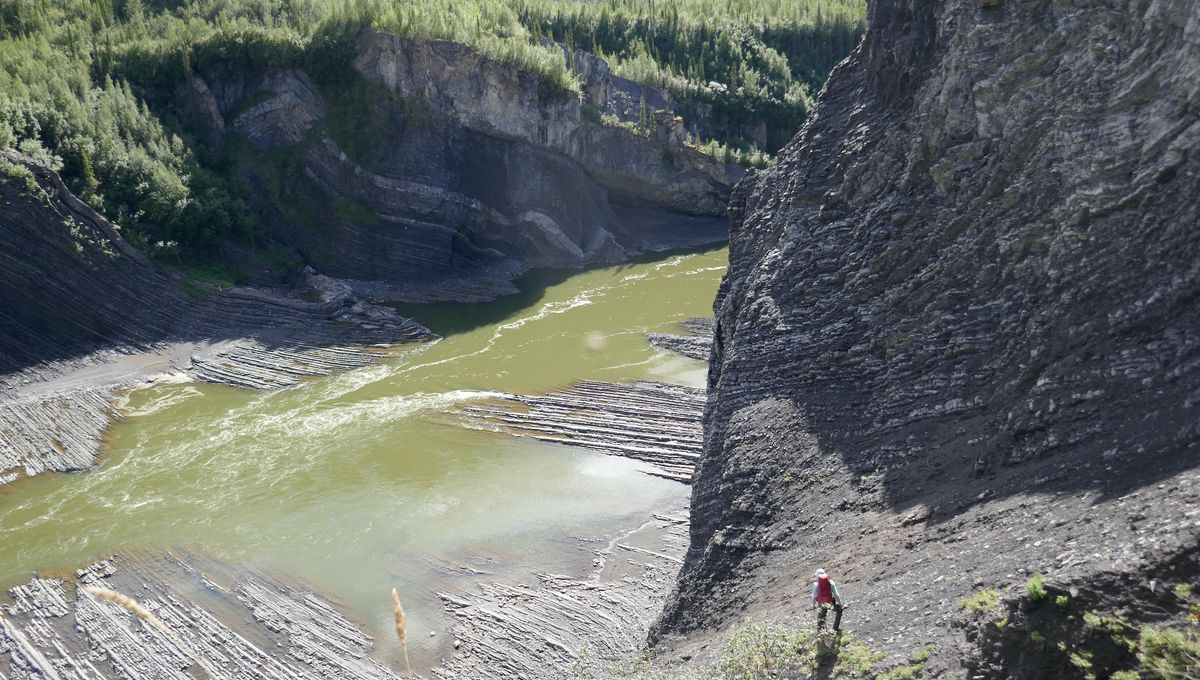
Putting together the puzzle of Earth’s history is made all the more difficult with the knowledge that pieces will inevitably be missing – or so palaeontologists thought. A team led by researchers from Stanford University has discovered a single site that records the development of life over an astonishing 120 million years.
Paleontologists’ view of the past is usually just a series of snapshots, brief moments in time when conditions were right at a particular location for animals or plants to fossilize. Even when that does occur, geological processes usually disrupt what is left behind, leaving us with only fragmented records.
That’s been the case for the Paleozoic, a particularly important, but poorly preserved era.
At least, until the team discovered rocks recording life on the ocean floor from 490 to 370 million years ago on the banks of the Peel River in Canada, which further north joins the Mackenzie Delta into the Arctic Sea.
The Peel River depots start in the Upper Cambrian, a time when oxygen was too scarce to allow much animal life, and end in the Middle Devonian, when fish had taken over the seas. Aside from some short interruptions, the entire Ordovician and Silurian eras are included.
“It’s unheard of to have that much of Earth’s history in one place,” said lead author Erik Sperling in a statement. “There’s nowhere else in the world that I know of where you can study that long a record of Earth history, where there’s basically no change in things like water depth or basin type.”
Sperling’s paper focuses on what the site reveals about the rise of oxygen; the early Earth had little to no oxygen in its atmosphere or oceans. The Great Oxidation Event 2.5-2.2 billion years ago changed this, but there was still not enough oxygen to support today’s fast-moving, active life.
The timing of the second big change, when oxygen concentrations came to approach those today, is also a matter of considerable uncertainty. It may have occurred as early as 800 million years ago, or possibly as little as half that time ago. Resolving this question will tell us a lot about the capacity of different types of life to survive in low-oxygen environments.
The paper concludes the atmosphere did not approach its current state until later than many scientists have previously thought. “The early animals were still living in a low oxygen world,” Sperling said.
Further study should also tell us a great deal about the species then living in these seas, which were not on the edge of the Arctic Circle at the time as they are now. Such an uninterrupted record can also act as a calibration tool for other deposits, helping to provide a more accurate indication of their timing. “In order to make comparisons throughout these huge swaths of our history and understand long-term trends, you need a continuous record,” Sperling said.
Valuable as the currents findings are – and future findings may be – this information was not won easily. The location is so inaccessible Sperling and colleagues had to fly to the site by helicopter and fight their way through thick brush with machetes. Once there, fieldwork was only possible for a short time before winter set in.
The study is published in Science Advances.
An earlier version of this article was published in July 2021.
Source Link: This Site Reveals 120 Million Years Of Earth's History